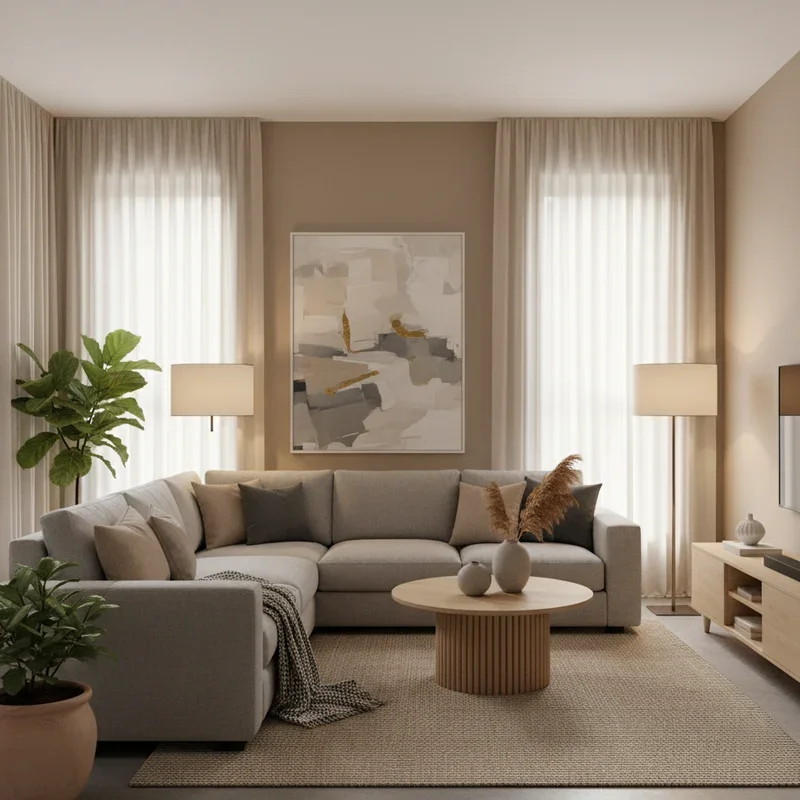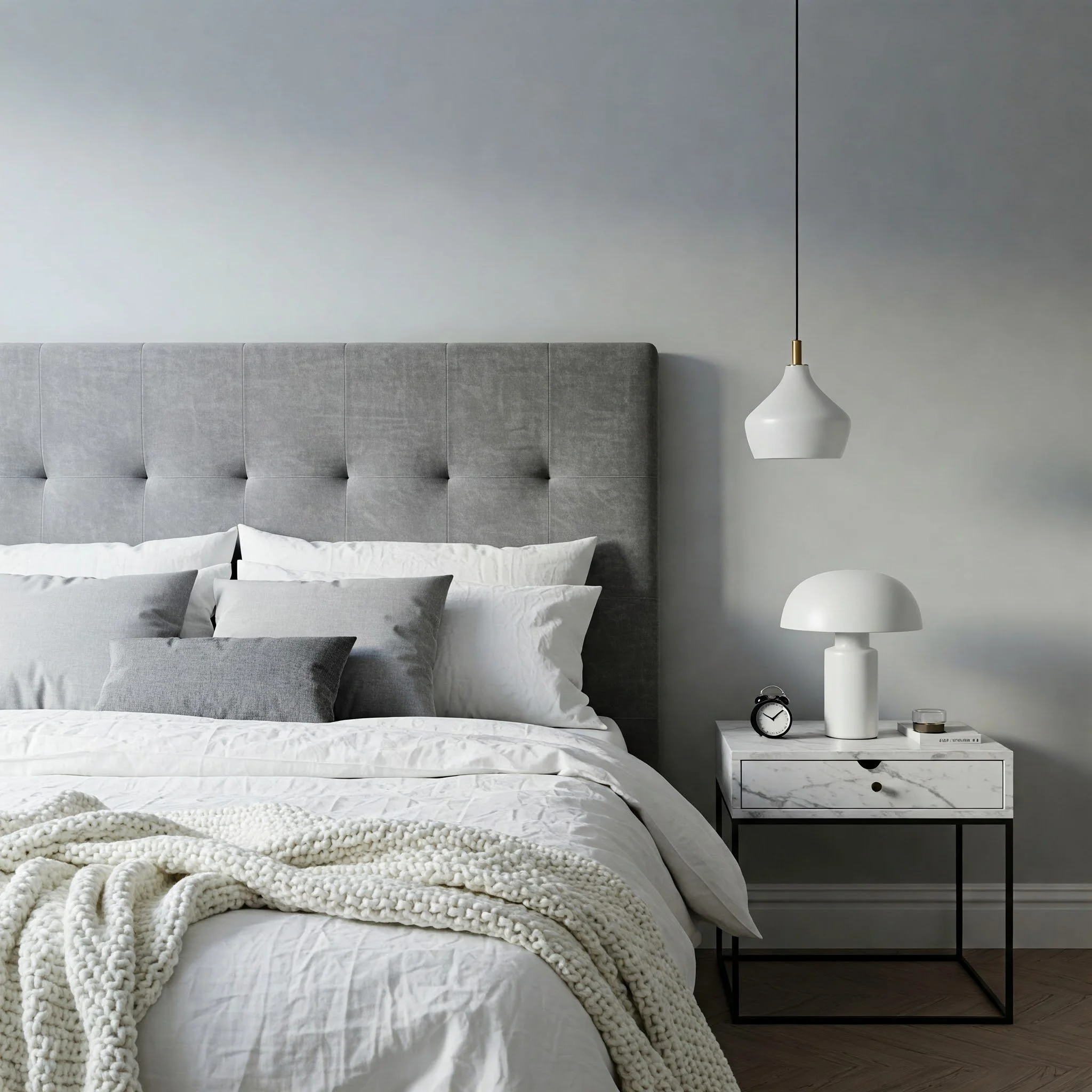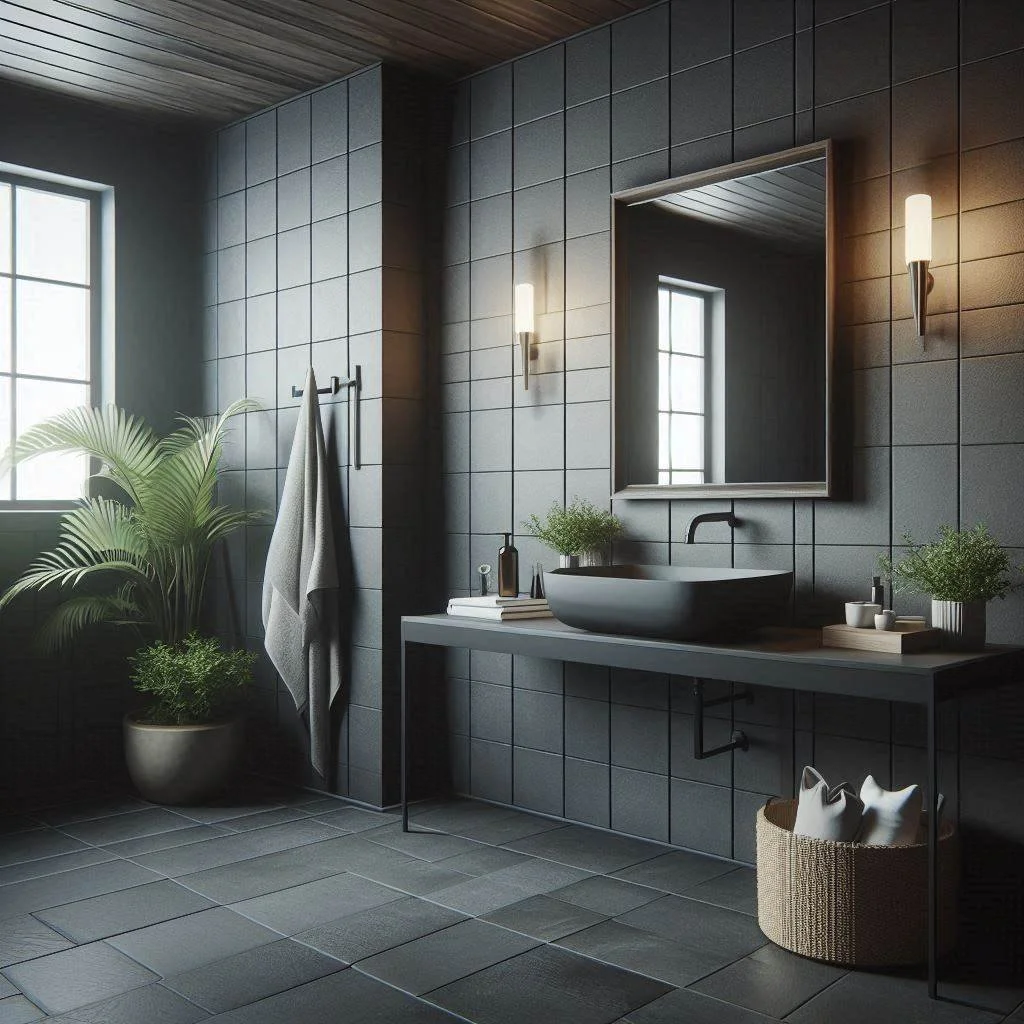15 Grey and Beige Living Room Ideas for Cozy Elegance
Discover 15 sophisticated grey and beige living room ideas that blend warmth with style. Create timeless elegance with neutral palettes and textures.
What if your living room could feel like a cashmere sweater and look like a spread from Architectural Digest at the same time? That's the promise of a well-executed grey and beige color scheme, where sophistication meets comfort in perfect harmony. These two neutrals might seem safe or even boring at first glance, but they're actually the design world's secret weapons for creating spaces that feel both current and timeless. Think of grey and beige as the perfect dinner party hosts: refined enough to impress but warm enough to make everyone feel at home. Whether you lean toward cool metropolitan greys or warm sandy beiges, combining these shades creates depth and interest that bright colors often can't achieve. Your living room can become that serene sanctuary where texture takes center stage, where subtle variations in tone create visual poetry, and where elegance doesn't mean sacrificing comfort. Ready to discover how these understated heroes can transform your living space into the sophisticated yet cozy retreat you've been dreaming about?
1. Layered Neutral Textures for Depth
Transform your grey and beige living room from flat to fabulous by layering different textures within your neutral palette. Start with a nubby linen sofa in warm beige, then add grey velvet pillows that catch light differently throughout the day. Include chunky knit throws in cream, woven baskets in natural tones, and perhaps a leather pouf in cognac that bridges warm and cool neutrals. Mix smooth surfaces like polished concrete coffee tables with rough elements like jute rugs or reclaimed wood shelves. This textural variety creates visual interest that colored rooms achieve through hue alone. The key lies in varying both texture and tone slightly within your grey-beige spectrum, preventing monotony while maintaining sophistication. Consider adding a sheepskin rug or mohair blanket for luxury touches that invite touch and create conversation pieces through texture rather than bold color statements.
2. Warm Beige Walls with Grey Furniture
Paint your walls in a warm, enveloping beige like wheat or sand, then anchor the space with sophisticated grey furniture pieces. This combination creates a cocoon-like atmosphere where cool grey seating appears to float against warm backgrounds. Choose a charcoal sectional or dove grey armchairs that provide visual weight without feeling heavy. The warm walls prevent grey furniture from feeling cold or institutional while the grey keeps beige from appearing dated or overly traditional. Add white trim and ceiling paint to create crisp definition between surfaces. Include transitional pieces like taupe ottomans or greige side tables that bridge the temperature gap between your two main colors. This approach works particularly well in rooms with limited natural light, as warm beige walls reflect available light while grey furniture grounds the space without absorbing too much brightness.
3. Two-Tone Paint Techniques
Elevate your neutral living room by using both grey and beige paint strategically on different walls or in creative applications. Paint three walls in soft beige and create an accent wall in complementary grey behind your main seating area. Alternatively, use horizontal color blocking with beige on top and grey below a chair rail for traditional elegance with a modern twist. Consider painting architectural features like built-ins or fireplace surrounds in grey while keeping walls beige for subtle contrast. This technique adds architectural interest without relying on bold colors or busy patterns. Choose paint finishes carefully: matte for walls and eggshell or satin for trim to create subtle textural differences. The two-tone approach allows you to define zones within open floor plans or highlight your room's best features while maintaining the serene neutral palette.
4. Natural Wood and Grey Balance
Incorporate natural wood tones as the perfect intermediary between grey and beige elements in your living room design. Choose furniture pieces in warm honey oak or cool ash wood that complement both colors simultaneously. A live-edge coffee table in walnut adds organic warmth to grey sofas while harmonizing with beige walls. Include wooden picture frames, floating shelves, or exposed ceiling beams that provide natural texture and color variation. The wood grain adds pattern without overwhelming the calm neutral base. Mix wood tones rather than matching everything perfectly; this creates a collected-over-time feel that prevents your room from looking like a furniture showroom. Position wooden elements strategically to create visual bridges between grey and beige zones, using the natural warmth of wood to unite potentially disparate neutral tones into one cohesive design story.
5. Monochromatic Beige with Grey Accents
Build your room around various shades of beige from ivory to camel, then punctuate with strategic grey accents for modern sophistication. Layer beige tones through walls in warm white, a linen sofa, caramel leather chairs, and cream curtains. Then add grey through artwork, throw pillows, ceramic vases, and perhaps a statement grey area rug that anchors the seating arrangement. This approach creates a warm, inviting base while grey accents prevent the space from feeling too soft or undefined. Choose greys with undertones that complement your beiges: greenish greys for yellow-beiges or purple-greys for pink-beiges. The key lies in using grey sparingly but impactfully, like punctuation marks in a beautifully written sentence. This technique works especially well in traditional homes wanting to modernize without losing classic warmth.
6. Charcoal and Cream Contrast
Create drama within your neutral palette by maximizing the contrast between deep charcoal grey and soft cream or ivory tones. Paint one wall in rich charcoal as a bold backdrop for cream-colored furniture, or reverse with charcoal seating against cream walls. This high-contrast approach adds visual excitement while remaining sophisticated and timeless. Include middle tones like taupe or mushroom to bridge the gap and prevent the scheme from feeling too stark. Add metallic accents in brass or copper to warm the cool charcoal while complementing cream's warmth. Use this contrast to highlight architectural features: charcoal built-ins against cream walls or cream molding against charcoal paint. The dramatic difference between these neutrals creates the same impact as using color while maintaining the calming properties of a neutral palette.
7. Greige: The Perfect Middle Ground
Embrace greige, that magical color that combines grey's sophistication with beige's warmth, as your room's unifying element. Use greige as your primary wall color, then layer true greys and beiges throughout furnishings and accessories. This chameleon shade shifts appearance with lighting changes, appearing more grey in cool northern light and more beige under warm lamplight. Choose greige upholstery for major pieces like sofas, then add interest through pure grey and beige accents. The beauty of greige lies in its ability to harmonize with both warm and cool neutrals, making decorating decisions easier. Layer different greige tones from mushroom to taupe for a sophisticated monochromatic scheme that never feels flat. This approach creates cohesion in open floor plans where one color needs to work with various lighting conditions and adjacent spaces.
8. Textured Wall Treatments in Neutrals
Add dimension to your grey and beige living room through textured wall treatments that create interest beyond flat paint. Install grasscloth wallpaper in natural beige tones for organic texture that changes appearance with lighting angles. Consider board and batten in soft grey for traditional architectural interest with modern color. Use venetian plaster techniques in greige for old-world elegance that adds depth without pattern. These treatments create subtle shadows and highlights that animate neutral walls throughout the day. Apply texture to just one accent wall to avoid overwhelming the space while adding that special something that elevates the entire room. Choose treatments that complement your furniture style: smooth stucco for modern pieces or beadboard for cottage-inspired designs. Textured walls provide the perfect backdrop for minimal artwork, letting the wall itself become an artistic element.
9. Mixed Metal Accents with Grey-Beige Base
Elevate your neutral living room by incorporating multiple metal finishes that add glamour without disrupting the serene palette. Mix warm brass or copper with cool chrome or nickel against your grey and beige backdrop. Use brass table lamps on grey side tables, chrome picture frames on beige walls, and perhaps a copper mirror above the fireplace. These metallic elements act like jewelry for your room, adding sparkle and sophistication while maintaining the neutral color story. The key lies in distributing metals throughout the space rather than clustering one finish in a single area. Include matte black metal as a grounding element that prevents the metallics from feeling too precious. This approach adds layers of interest through reflection and shine, creating focal points that draw the eye without relying on bright colors.
10. Plush Seating in Varied Neutral Tones
Create an inviting seating arrangement using furniture pieces in different shades within your grey-beige spectrum for visual interest and maximum comfort. Choose a large sectional in warm greige, accent chairs in charcoal velvet, and an ottoman in creamy beige leather. This tonal variation prevents the seating area from appearing as one monolithic block while maintaining color harmony. Include various fabric textures: bouclé, velvet, linen, and leather all in neutral shades for tactile interest. Layer throw pillows in patterns that combine both grey and beige, unifying the different furniture pieces. The varied tones allow flexibility in rearranging furniture for different occasions without worrying about clashing colors. This approach creates a sophisticated conversation area where each piece stands alone beautifully while contributing to the cohesive whole.
11. Statement Lighting Against Neutral Backdrops
Let dramatic lighting fixtures shine as functional art against your subdued grey and beige canvas. Choose an oversized pendant in matte black or brushed gold that commands attention without introducing new colors. Install sculptural sconces that cast interesting shadows on neutral walls, creating ever-changing art throughout the day. A modern chandelier with geometric shapes adds contemporary edge to traditional neutral palettes. Position lighting to highlight textural elements in your neutral scheme: grazing light across textured walls or spotlighting a beautiful grey velvet chair. Include table and floor lamps in interesting shapes or materials that serve as decorative objects even when unlit. The contrast between bold fixture shapes and quiet colors creates sophisticated focal points. This approach allows you to make design statements through form rather than color, maintaining serenity while adding personality.
12. Pattern Play in Grey and Beige
Introduce visual interest through patterns that combine grey and beige rather than relying on solid colors alone. Choose geometric rugs featuring both colors, striped curtains alternating grey and beige, or throw pillows with abstract patterns incorporating your neutral palette. Mix pattern scales: large geometric prints on rugs, medium stripes on curtains, and small patterns on accent pillows. This creates rhythm without chaos, as the limited color palette keeps patterns from overwhelming. Include organic patterns like marble veining or wood grain alongside geometric designs for natural balance. The key lies in maintaining consistent colors while varying pattern types and scales throughout the room. This technique adds personality and movement to neutral spaces that might otherwise feel static, proving that neutral doesn't mean boring when pattern enters the equation.
13. Natural Fiber Rugs and Neutral Furniture
Ground your grey and beige living room with natural fiber rugs in jute, sisal, or wool that add organic texture while maintaining the neutral palette. These materials bring warmth and earthiness that prevents grey furniture from feeling cold or beige walls from appearing sterile. Layer a smaller patterned rug in grey and beige over a larger natural fiber base for added interest and comfort underfoot. The natural variations in fiber rugs add subtle pattern through texture rather than printed designs. Choose furniture with exposed wood frames or legs that echo the natural fiber tones, creating visual connections throughout the room. Position natural fiber elements strategically: a jute rug under grey seating or woven baskets against beige walls for textural contrast. This approach brings outdoor elements inside while maintaining sophistication suitable for formal or casual living rooms.
14. Window Treatments in Layered Neutrals
Design sophisticated window treatments using layers of grey and beige fabrics for both function and beauty. Install sheer curtains in ivory close to the glass for privacy and light filtering, then add heavier drapes in grey or taupe for light control and insulation. This layering creates depth at windows while allowing flexibility in light management throughout the day. Choose fabrics with subtle textures: linen sheers and velvet drapes, or cotton sheers with wool drapes. Mount curtain rods close to the ceiling and extend beyond window frames to maximize light and create the illusion of larger windows. Include roman shades in greige as an alternative for a clean-lined look that doesn't sacrifice softness. The layered approach adds luxury while maintaining the room's neutral palette, creating frames for outdoor views that enhance rather than compete with nature.
15. Seasonal Flexibility with Neutral Foundation
Build your grey and beige living room as a neutral foundation that easily accommodates seasonal decorating changes without major overhauls. This neutral base allows you to add pops of seasonal color through easily changeable accessories: coral pillows for summer, rust throws for fall, or emerald plants for spring. The grey-beige palette serves as a sophisticated backdrop that makes any accent color appear intentional and curated. Swap out artwork, change throw pillow covers, or add seasonal flowers to transform the room's mood while maintaining its elegant bones. Store seasonal accessories in neutral containers that can remain visible as decorative elements. This flexibility means your investment in quality neutral furniture and paint pays off year-round, as the room never looks dated or locked into one seasonal scheme. The neutral foundation ensures coherence even as decorative elements change with your moods or the calendar.
Conclusion
Creating a grey and beige living room proves that neutral doesn't mean boring when executed with intention and creativity. These fifteen ideas demonstrate how combining these versatile colors creates sophisticated spaces that balance warmth with modernity, comfort with elegance. Whether you prefer high contrast or subtle tonal variations, the grey-beige palette offers endless possibilities for expressing personal style while maintaining timeless appeal. Start with one element that resonates with you and build gradually, discovering how these understated colors can create the extraordinary living room you've always envisioned.
Read next: 15 Beige Living Room Ideas for a Cozy, Chic Look
Frequently Asked Questions
Q1: Will a grey and beige living room look boring?
A: Not when you layer textures, vary tones, and add metallic accents for visual interest.
Q2: Which shade of grey works best with beige?
A: Warm greys with brown undertones complement beige better than cool blue-based greys typically.
Q3: How do I add personality to neutral rooms?
A: Include statement lighting, textured walls, mixed metals, and interesting patterns within the neutral palette.
Q4: Can grey and beige work in small living rooms?
A: Yes, light versions of both colors actually make small spaces appear larger and brighter.
Q5: What accent colors work with grey and beige?
A: Navy, emerald, rust, blush pink, and deep burgundy all complement grey-beige schemes beautifully.













































